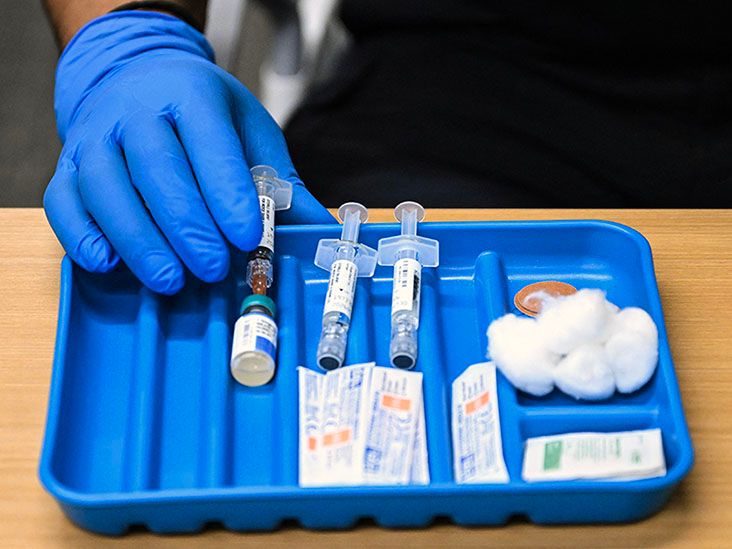Microscopic colitis and ulcerative colitis (UC) both cause colon inflammation. While there are some similarities, they are different conditions with separate causes.

Both conditions have many overlapping symptoms, but how a doctor diagnoses them differs.
Usually, inflammation with UC is visible through a colonoscopy, but with microscopic colitis, the colon appears “normal” when viewed using a colonoscopy. Doctors usually only detect inflammation through a microscope.
This article provides an overview of the differences and similarities between microscopic colitis and UC, including prevalence, types, associated conditions, causes, treatments, links, and outlook.
UC and microscopic colitis have some differences and similarities.
UC is a form of inflammatory bowel disease (IBD). It occurs when the immune system attacks tissue in the large intestine. Roughly
Microscopic colitis also involves colon inflammation, but there is no link between UC to Crohn’s disease, another type of IBD.
A 2022 meta-analysis found that microscopic colitis worldwide includes 4.9 cases of collagenous colitis per 100,000 people and 5.0 cases of lymphocytic colitis per 100,000 — two types of microscopic colitis.
Overlapping symptoms
UC and microscopic colitis have an overlap in symptoms. Both conditions can cause:
- abdominal pain
- weight loss
- the urgency to have a bowel movement
- diarrhea
About 22% of people with microscopic colitis report having 10 or more bowel movements daily. Chronic, watery diarrhea is one of the main symptoms of microscopic colitis.
How the conditions affect a person differently
However, it differs from UC in that diarrhea is not bloody. With UC, the stool often
Learn more about blood in the stool.
Both UC and microscopic colitis have subtypes.
The types of microscopic colitis include:
- Collagenous colitis: People with this form of microscopic colitis develop a layer of collagen in the colon’s tissue. The collagen is visible by examining the tissue under a microscope.
- Lymphocytic colitis: This form of colitis involves increased white blood cells in the tissue of the large intestines.
There are also several types of UC, including:
- Ulcerative proctitis: This type only causes inflammation in the rectum.
- Left-sided colitis: This type of UC can affect an area of the colon from the rectum to the splenic flexure, which is on the left side of the body.
- Proctosigmoiditis: The condition only affects the rectum and lower part of the colon — the sigmoid colon. This type is similar to left-sided UC but does not affect the colon as extensively.
- Extensive colitis or pancolitis: This type leads to inflammation of the entire colon. It starts at the rectum and extends up the entire large intestine.
- Toxic colitis or fulminant colitis: This is a complication of severe UC and it is a medical emergency.
Learn more about the types of UC.
UC is an autoimmune-related condition. In fact, both conditions appear to have a link with autoimmune diseases.
According to the Crohn’s and Colitis Foundation, doctors do not fully understand the cause of UC, but genetics, environmental factors, and abnormal immune system response may all contribute.
Up to
The cause of microscopic colitis remains unclear, but it may also have a genetic link.
Researchers have found certain factors associated with an
- smoking
- taking certain medications, such as proton pump inhibitors and nonsteroidal anti-inflammatory medications (NSAIDs)
- having an autoimmune condition
- bacterial antigens or toxins that increase inflammatory markers in the colon
Although it can occur at a younger age, microscopic colitis occurs more often in people over 60 years old. The condition affects females
Doctors use a colonoscopy to detect UC and microscopic colitis, but the colon may appear unaffected in people with microscopic colitis.
As a result, doctors take a tissue sample during this procedure if they suspect microscopic colitis. Technicians perform microscopic analyses of the tissue sample of the colon to check for changes that indicate microscopic colitis.
Doctors may also use blood and stool tests to diagnose UC.
Find out more about how doctors diagnose UC.
Treatment for microscopic colitis and UC may vary based on the severity of symptoms and frequency of flares.
Treatment for both conditions involves the following:
- medication to stop colon inflammation, including steroids
- diet modifications to maintain proper nutrition and curb foods that aggravate symptoms
- in severe cases, surgery
A 2019 study found a link between microscopic colitis and the development of UC. Researchers found that people with microscopic colitis have a 17 times greater risk of developing some form of inflammatory bowel disease, such as UC, than the general public.
The outlook for UC and microscopic colitis varies based on how severe a person’s symptoms become. For example, if symptoms of bloody diarrhea become severe, it can lead to dehydration, shock, and anemia.
UC also is a risk factor for developing colon cancer.
While both are long-term conditions, UC and microscopic colitis are manageable with the correct treatment.
Microscopic colitis and UC both lead to inflammation of the colon.
UC causes thickening of the colon, visible through a colonoscopy. With microscopic colitis, doctors can only identify tissue changes by examining a sample of colon tissue under a microscope.
The cause of both diseases is unclear, but there appears to be a genetic component and certain risk factors that increase the likelihood of developing them. Treatment aims to decrease inflammation and prevent flare-ups.
IBD resources
Visit our dedicated hub for more research-backed information and in-depth resources on inflammatory bowel disease (IBD).

